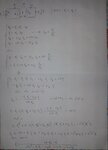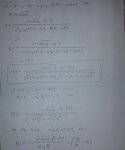SPB
Newbie level 2

This is for a school lab.
My theoretical calculations are not matching the pspice simulations. I have attatched photos of the circuit constructed and simulated.


With a peak input voltage of 169.7 and a primary inductance of 2000H and secondary inductance of 20H I'm getting an output voltage at Vs1 and Vs2 of 11.931 volts according to the simulation.
However, my predicted values according to my theoretical work are as follows:
Vp/Vs = sqrt(L1/L2)
Vs = Vp/sqrt(L1/L2)
Vs = 169.7/(sqrt(2000/20) = 16.97
So at the positive and negative half cycle for each Vs1 and Vs2 I should expect +16.97 and -16.97 respectively. Why am I getting 11.931 in the simulation?
Are my calculation incorrect? Or did I not edit the transformer correctly.
I edited the properties of the transformer as follows:
LP_VALUE - 2000H
LS1_VALUE - 20H
LS2 - VALUE - 20H
Is there something else I am missing?
My theoretical calculations are not matching the pspice simulations. I have attatched photos of the circuit constructed and simulated.


With a peak input voltage of 169.7 and a primary inductance of 2000H and secondary inductance of 20H I'm getting an output voltage at Vs1 and Vs2 of 11.931 volts according to the simulation.
However, my predicted values according to my theoretical work are as follows:
Vp/Vs = sqrt(L1/L2)
Vs = Vp/sqrt(L1/L2)
Vs = 169.7/(sqrt(2000/20) = 16.97
So at the positive and negative half cycle for each Vs1 and Vs2 I should expect +16.97 and -16.97 respectively. Why am I getting 11.931 in the simulation?
Are my calculation incorrect? Or did I not edit the transformer correctly.
I edited the properties of the transformer as follows:
LP_VALUE - 2000H
LS1_VALUE - 20H
LS2 - VALUE - 20H
Is there something else I am missing?



